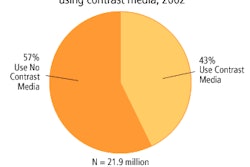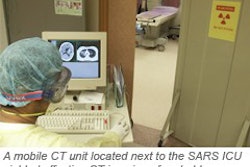A dramatic decrease in the shortage of U.S. radiologists appears to have taken place, according to a study published in the February 2004 issue of the American Journal of Roentgenology.
The study findings clearly point to fewer vacancies in the radiology job market, according to lead author Jonathan Sunshine, Ph.D., from the American College of Radiology of Reston, VA. Sunshine is lead author of the study, which examined information from four sources: job advertisements, vacancies at academic radiology departments, the ratio of diagnostic radiology listings to job seekers at a major professional placement service, and a survey of radiologists (AJR, February 2004, Vol. 182:2, pp. 301-305).
There were 848 jobs advertised in AJR and Radiology from September through November 2003, a 28% decline from the 1,186 posted during the same period in 2002, the research team found. In addition, an annual survey of 120 academic departments by Dr. Douglas Maynard of Wake Forest University in Winston-Salem, NC, found that radiologist vacancies averaged 3.9 in 2003, down from 5.1 in 2002 and 5.4 in 2001.
In addition, the ratio of radiology listings to job seekers at the ACR Professional Bureau during its week of peak activity also fell, from 3.8 in 2000 to 1.4 in 2002. Data for 2003 was not yet available.
In other findings in the report, 17% of radiologists in 2003 reported a desire for a decrease in workload and 16% a desire for an increase. In 2000, 51% reported too much work and only 5% reported too little, according to the researchers.
The authors noted the limitations of the information sources, including the possibility that electronic media were being used more than print publications to advertise openings. However, the authors said they believe they have reached a sound conclusion that the radiology shortage has eased considerably.
Although surprised by the findings and not sure why they occurred, the authors identified possible reasons behind the shortage, including the possibility that radiologists were delaying retirement and are working longer hours. In addition, the authors cited the possibility that technical developments have been improving productivity and that work has been outsourced to foreign radiologists.
By AuntMinnie.com staff writersFebruary 9, 2004
Related Reading
Survey predicts big loss of practitioners to retirement, changing work patterns, December 23, 2003
Residents leery of careers in breast imaging, December 15, 2003
Radiology salaries rise again in south, October 23, 2003
Least-desirable jobs dominate radiology employment ads, study shows, August 19, 2003
AMGA finds solid radiologist compensation gains, August 12, 2003
Copyright © 2004 AuntMinnie.com



















